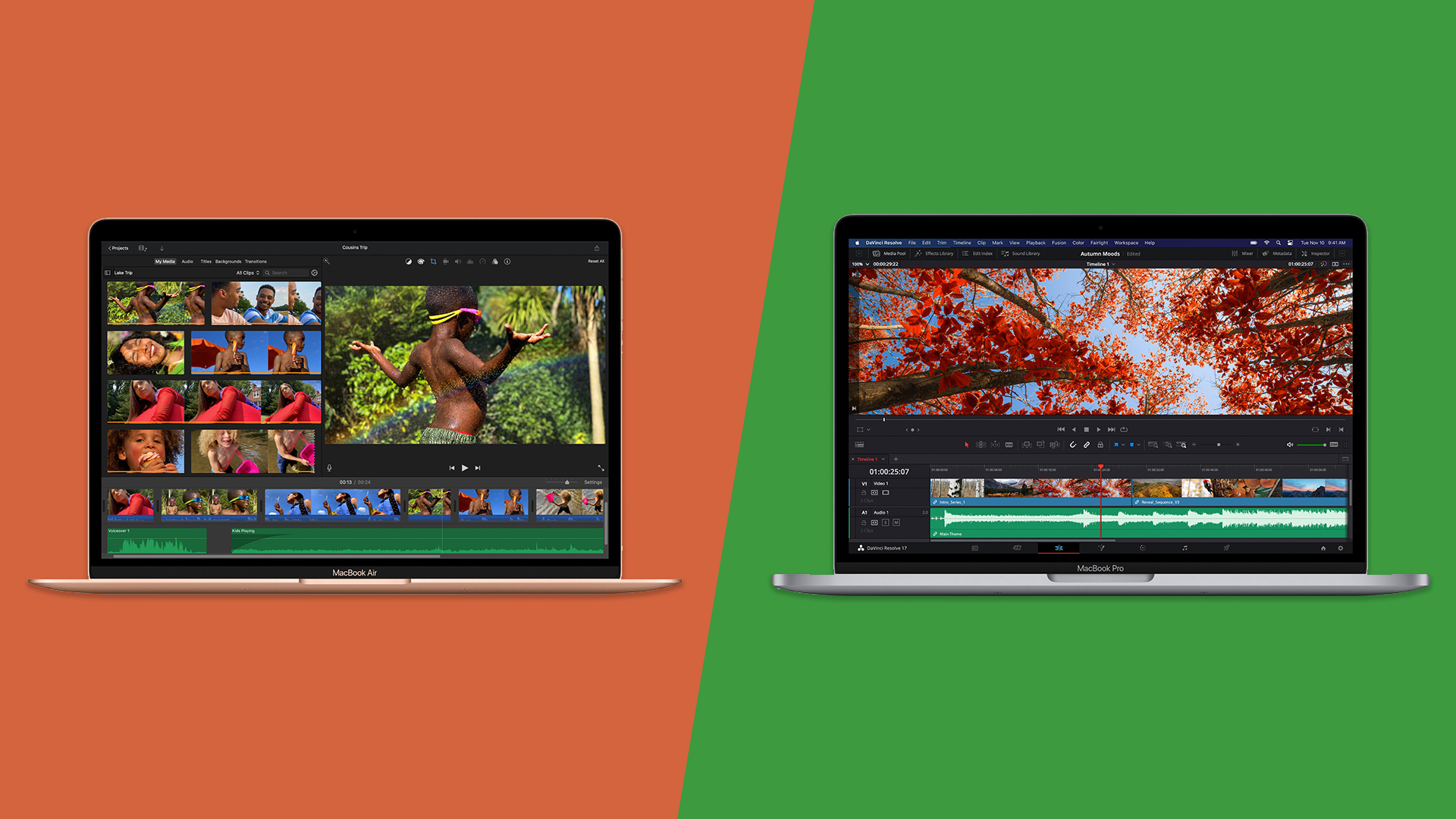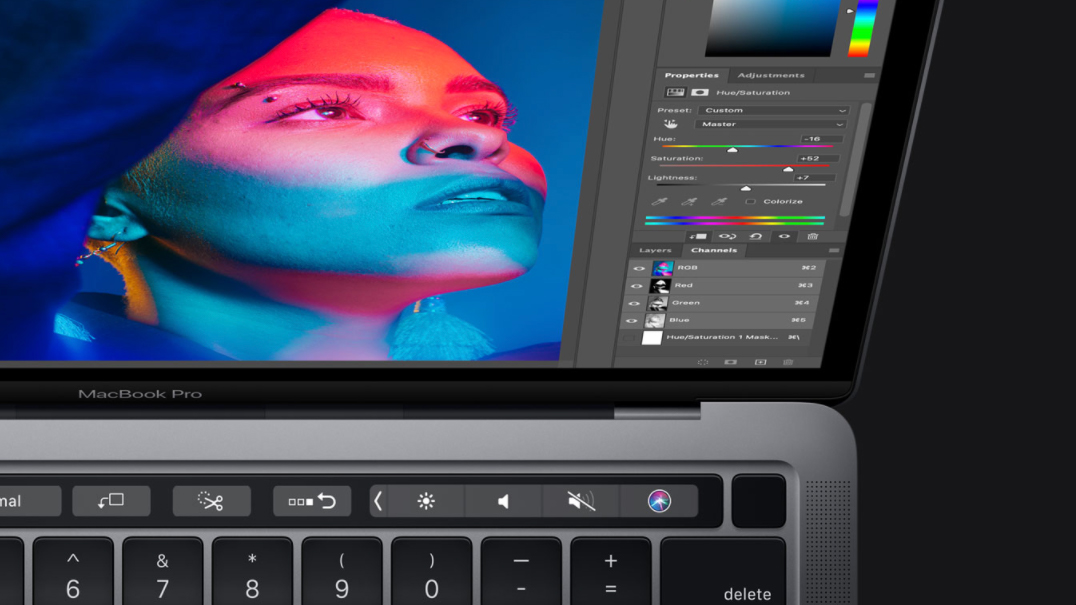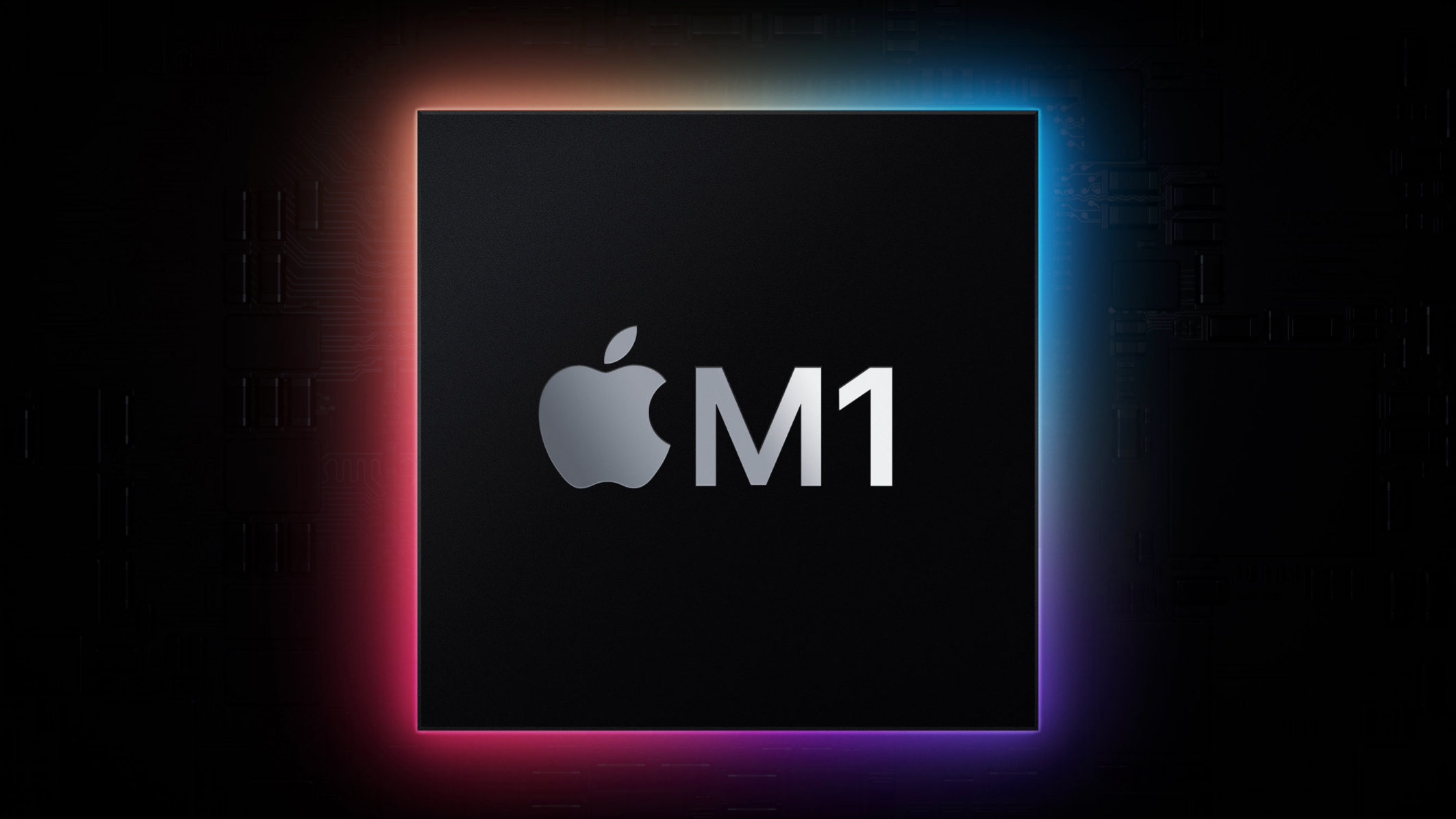MacBook Air M1 vs MacBook Pro M1: which MacBook is best for you?
We compare the new MacBook Air and MacBook Pro to help you choose which best fits your needs


The new generation of the MacBook Air and MacBook Pro 13-inch are out now, rocking Apple’s much-awaited M1 chip that delivers double or even triple the performance over Intel processors used in similar machines, and comes with an 8-core GPU more powerful than Intel Iris graphics.
With such incredible pure power, MacBook fans naturally have high hopes for Apple’s latest laptops. How exactly they measure up against their Intel predecessors in more ways than just speed will have to wait until we get our hands on them for review.
For now, if you're already sure you want one, the more important question is which new MacBook with the M1 chip is best for you. After all, while the two largely target two different markets – with the MacBook Air M1 being designed for users with less intensive workflows and the MacBook Pro 13-inch M1 being touted for creative professionals with the need to stay mobile – they have overlapping specs and configurations.
Both the MacBook Air M1’s and the MacBook Pro 13-inch have very similar internals: M1 chip with an 8‑core CPU and 7- or 8‑core GPU, 16-core Neural Engine, 8GB unified memory, and 256GB SSD storage – with the option to increase RAM to 16GB and storage to 2TB. Only, the MacBook Pro starts at £300/$300/AU$400 more expensive.
Of course, it’s not only the processor, memory, and storage that matter when choosing the best laptop for you. Things like display, audio, battery life, and other features – not to mention, your budget and needs – matter just as much, and those ultimately make all the difference here. When it comes to the MacBook Air M1 versus the MacBook Pro M1 13-inch, here’s everything you need to know to decide.
MacBook Air M1 vs MacBook Pro M1: Price
MacBook users looking to upgrade will be happy to learn the good news: despite the M1 chip promising a huge performance boost over its Intel rivals, the price tag for both laptops remain unchanged.
The MacBook Air M1 will still set you back £999/$999/AU$1,599 for its base configuration, like its early 2020 predecessor. Only this time, it comes with Apple’s M1 Chip with an 8‑Core CPU and 7‑Core GPU, and 16-core Neural Engine, as well as 8GB RAM and 256GB of storage. If you’d like to configure this base model to meet your needs, it’ll cost you £200/$200/AU$300 for 16GB RAM, and anywhere from £200/$200/$300 to £800/$800/AU$1,200 to get up to 2TB of storage space.
Get all the latest news, reviews, deals and buying guides on gorgeous tech, home and active products from the T3 experts
Similarly, its highest configuration will cost you £1,249/$1,249/$1,999 for a M1 Chip with an 8-Core CPU and 8-Core GPU, 16-core Neural Engine, 8GB RAM, and 512GB of storage. You’re essentially paying £250/$250/AU$400 more for a little extra graphics power and twice the storage. If you’d like to upgrade this one, you’ll have to shell out £200/$200/AU$300 for 16GB RAM, £200/$200/$300 for 1TB storage, and £600/$600/$900 for 2TB of storage.
Meanwhile, the MacBook Pro M1 13-inch’s base configuration costs £1,299/$1,299. It gets you the Apple M1 Chip with an 8-Core CPU and 8-Core GPU, 16-core Neural Engine, 8GB RAM, and 256GB of storage, and the same upgrade options as the Air.
For this laptop’s highest M1 configuration, you’ll be paying £1,499/$1,499/AU$1,999. That means you’re paying £200/$200/AU$400 more for mostly the same specs, except for its storage, which is doubled. Upgrade options for this configuration are the same as those of the Air’s as well.
So, what exactly makes the MacBook Pro M1 13-inch worth up to $300 more than the MacBook Air M1, especially when there isn’t a huge difference in the internals core specs?
MacBook Air M1 vs MacBook Pro M1: Design and features

You'll get a few more advanced features with the MacBook Pro M1 13-inch for that premium, starting with the Touch Bar, and a brighter screen.
Both of these extra features are very much on brand with the MacBook Pro M1 13-inch. The Touch Bar is an incredibly useful tool for streamlining creative workflows, and its functionality is only expanding with more and more apps providing support. Where it's useful, it can be excellent for providing quicker access to options, though we have to say that not everyone finds that it makes a big difference to their work.
The two new MacBooks offer the same 13.3-inch 2560x1600 LED-backlit IPS Retina display with the wide P3 colour gamut and Apple's True Tone technology, which makes the screen more comfortable to view in artificial light. However, the MacBook Pro M1 13-inch is 20% brighter at 500 nits instead of 400 nits on the MacBook Air.
Audio is another area of difference: while both deliver wide stereo sound quality with support for Dolby Atmos playback and three-mic array with directional beamforming, the Pro has high dynamic range speakers and a "studio-quality" mic (Apple's description). Basically, the MacBook Air is really clear and good for sound, but the Pro is just a little better.
Those are extremely useful upgrades for creators, whether they’re photographers, video editors, musicians, or sound engineers.
There’s also, of course, the size and weight difference. MacBook Airs are known to be the thinnest and lightest MacBooks (after the 12-inch MacBook was discontinued), so it’s hardly a surprise that the MacBook Air M1 boasts the same advantage here.
Both M1 laptops have the same width and depth at 11.97 x 8.36 inches (30.41 x 21.24 cm). However, the Air still has the advantage of a tapered thinner design and being a tad lighter – 0.2 lb (0.11 kg) – than the Pro 13-inch.
You might notice that this is a really small weight difference – actually the Pro really isn't massively heavier than the Air, but the Air does have noticeably less volume to it because of its wedge shape.
Both machines have two USB-C ports that double as Thunderbolt 4 ports, providing huge bandwidth for connecting external accessories (though external GPUs aren't supported on either). These also provide power as well. Both machines also have a 3.5mm headphone jack.
MacBook Air M1 vs MacBook Pro M1: Specs and performance

Early tests show that the MacBook Air M1 measures up to the MacBook Pro 13-inch M1 in practice for short bursts, which is very impressive considering that it's fanless, so is potentially more prone to thermal throttling (where a processor reaches the maximum heat that is safe, so has to ramp down its performance to avoid any damage).
That’s on top of the fact that Apple has promised that with its 8-core GPU, this MacBook Air M1 configuration would deliver a noticeable difference in graphical performance, enabling its users to play modern games.
Early tests show both machines as having colossal power – easily double their predecessors – but for sustained tasks (such as very long video exports) the MacBook Pro does appear to have an edge, thanks to it having a fan (which is impressively silent).
However, most people will only tax the processor a minute at a time at the most, and it looks like the MacBook Air gives you the full power for the M1 for that time, so you could save some money if you're not performing really intensive tasks.
There is the matter of battery life, however. While it’s true that the new MacBook Air M1 has the longest battery life of any MacBook Air so far, with up to 18 hours of video playback (and up to 15 hours of web browsing), thanks to the M1 being incredibly power efficient, it only has an integrated 49.9-watt-hour lithium-polymer battery.
The MacBook Pro 13-inch M1, meanwhile, has a 58.2-watt-hour lithium-polymer battery, which gives users up to two more hours of juice. That might not seem like much, but it’ll prove incredibly useful in real world situations. A professional will certainly appreciate that extra couple of hours to finish up a project or roll out a few more important emails.
However, either laptop is a revelation for battery life – you really can work all day on one, not just all the working day.
MacBook Air M1 vs MacBook Pro M1: Verdict
At first blush, there might not be much difference between the MacBook Air M1 and MacBook Pro M1. The most important thing is that both laptops features the M1 chip, two Thunderbolt 4 ports,8GB RAM, and 256GB of storage. And though the base-level Air has marginally less powerful graphics in its cheaper model, that won't make much difference in practice.
The fact that the Air is fanless means that the Pro appears to offer a little more power, but we'll dig into that for our reviews. For now, however, the key differences are between their feature sets – not to mention, your budget.
So, which MacBook is best for you exactly?
With a Touch Bar, brighter display, and longer battery life, the MacBook Pro 13-inch M1 is worth the investment if you need everything to be at its best to improve your workflow as much as its powerful performance.
With a lighter, more svelte body, a cheaper price, and the additional gold colour option, the MacBook Air M1 is a terrific option not only for casual users, but also for the more budget consumers, and even professionals who only require an extremely portable laptop that won’t cost them as much.
What about the old models?
We're seeing some Black Friday discounts on the previous MacBook Air especially now that the M1 version has arrived. Though the new version is much faster and offers longer battery life, you'll still get an excellent laptop for your money – particularly if you can save significantly and you don't feel that you'll use it for any intense tasks.

Michelle Rae Uy is a tech and travel journalist, editor and photographer with a bad case of wanderlust. She is a regular contributor for IGN, TechRadar and Business Insider, and has contributed to Thrillist, Paste Magazine, Nylon, Fodor's and Steve's Digicams. Living mainly in California with her adorable cats, she splits her time between Los Angeles, London and the rest of the world.